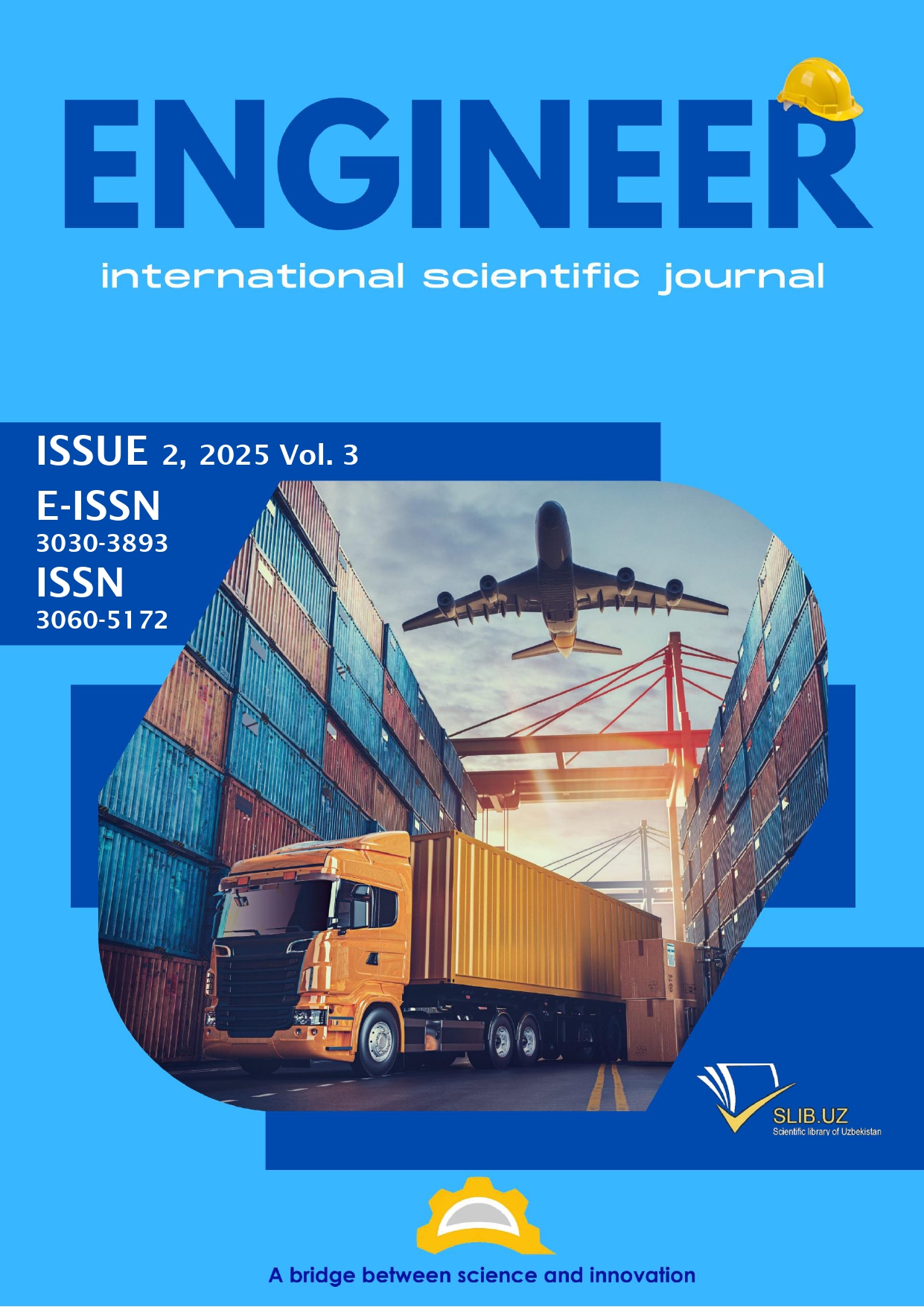Studying and analyzing the traffic intensity of vehicles
Аннотация
The study of vehicle traffic intensity plays an important role in the development of modern cities and infrastructure. Traffic intensity represents the distribution of traffic flow in time and space. Today, the increase in the number of vehicles in large cities and industrial centers leads to traffic congestion, environmental problems, and a decrease in logistics efficiency. Therefore, a deep analysis of the intensity of movement is necessary for the development of effective management measures. As a result of the research, the daily and weekly traffic intensity of vehicles, the hours of peak load were determined, and recommendations for optimal routing and signaling systems were developed. Based on the data obtained, it is possible to modernize traffic management systems, reduce traffic congestion, and improve the environmental situation. The study is also of practical importance in modeling the state of roads and traffic flow.
Литература
[2] K.Kh.Azizov. Fundamentals of traffic safety organization. Textbook, Tashkent, 1999-113 pages.
[3] Vahidi and A. Eskandarian, "Intelligent cruise control systems: Design and analysis," IEEE Trans. Intel. Trans. Syst., vol. 4, no. 3, pp. 143-153, Sep. 2003.
[4] C. Chien, Y. Ding, and C. J. Spanos, "Adaptive traffic signal control using vehicle-to-infrastructure communication," IEEE Trans. Intel. Trans. Syst., vol. 15, no. 4, pp. 1482-1494, Aug. 2014.
[5] H. Dia, "An agent-based approach to modeling driver route choice behavior under the influence of real-time information," Transp. Res. C, vol. 10, no. 5-6, pp. 331-349, Oct.-Dec. 2002.
[6] P. G. Michalopoulos, "Vehicle detection technologies for traffic management applications," Trans. Res. C, vol. 1, no. 2, pp. 77-98, 1993.
[7] Y. Yuan, Y. Zhang, and J. Li, "A data-driven approach for spatiotemporal traffic flow prediction using a hybrid deep learning model," IEEE Access, vol. 8, pp. 144200-144209, 2020.
[8] L. Li, Y. Lv, and F. Y. Wang, "Traffic signal timing via deep reinforcement learning," IEEE/CAA J. Autom. Sinica, vol. 3, no. 3, pp. 247-254, Jul. 2016.
[9] Kesting, Traffic Flow Dynamics: Data, Models and Simulation.
[10] K. Nagel and M. Schreckenberg, "A cellular automaton model for freeway traffic," J. Phys. I. France, vol. 2, no. 12, pp. 2221-2229, 1992.
[11] S. Hoogendoorn and P. H. L. Bovy, "State-of-the-art of vehicular traffic flow modeling," Proc. Inst. Mech. Eng. Part I: J. Syst. Control Eng., vol. 215, no. 4, pp. 283-303, 2001.
[12] Y. Zheng, L. Capra, O. Wolfson, and H. Yang, "Urban computing: Concepts, methodologies, and applications," ACM Trans. Intel. System. Technol., vol. 5, no. 3, pp. 38:1-38:55, Sep. 2014.
[13] H. Bar-Gera, "Evaluation of a cellular phone-based system for measurements of traffic speeds and travel times: A case study from Israel," Transp. Res. C, vol. 15, no. 6, pp. 380-391, 2007.
[14] M. Barth and K. Boriboonsomsin, "Real-world carbon dioxide impacts of traffic congestion," Trans. Res. Rec., vol. 2058, pp. 163-171, 2008.
[15] M. S. Ahmed and A. R. Cook, "Analysis of freeway traffic time-series data by using Box-Jenkins techniques," Transp. Res. Rec., vol. 722, pp. 1-9, 1979.
[16] B. Coifman, "Vehicle reidentification and travel time measurement in real-time on freeways using the existing loop detector infrastructure," Transp. Res. Rec., vol. 1643, pp. 181-191, 1998.





